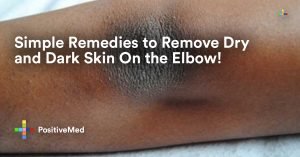
Strep Throat Symptoms And What You Can Do
Strep throat is a sore throat accompanied by fever caused by streptococcus, a bacterial infection that causes inflammation and pain in the throat. It can affect anyone of any age but is most common in children aged 5 to 15 years. It’s a contagious infection that spreads through sneezing and coughing.

How can you tell if you or someone in your family has strep throat? Here are the symptoms:
Usually the symptoms become apparent after a 1-4 day incubation period. Symptoms can be mild or severe, usually the back of the throat and tonsils become red and swollen with white fuzzy patches. The swelling can be painful and cause difficulty swallowing, which when combined with fever can lead to dehydration.
It’s difficult to diagnose strep throat using only symptoms, testing is needed, often a swab to the affected area. Strep throat and sore throat from a viral infection have similar symptoms.
Symptoms of strep throat include:
• Fever
• White spots on the tonsils
• Red, inflamed, and swollen tonsils
• Sore throat
• Tender lymph nodes on the upper part of your neck
There are complementary symptoms as well which are:
• Headache
• Scarlet rash
• Loss of appetite
• Abdominal pain
• Nausea/vomiting
• Feelings of discomfort
• Red spots on the roof of your mouth
• General fatigue
There are special symptoms for different age groups:
• Infants
Infants often have thick, purulent nasal discharge and low-grade fever, below 101F or 38.33C. They can be more fussy and irritable, and have loss of appetite. Strep throat in this age group is rare.
• Toddlers
Children aged 1 to 3 years may complain about difficulty and pain swallowing. They may also have limited appetite and swollen lymph nodes beneath the lower jaw bone.
• Older children/teenagers
Strep throat at this age is painful and uncomfortable. They often complain of severe throat pain, especially when swallowing, and suffer from fever and illness.
• Adults
Adults usually have milder symptoms, like a mild sore throat, but there is the possibility of more severe symptoms. There is often bad breath from the infection. They usually require less medical treatment unless they have a history of strep throat.
How can you distinguish between a sore throat and strep throat?
• Raw, red spots with white patches on swollen tonsils are signs of strep throat.
• If you have a runny nose, sinus congestion, coughing, postnasal drip, or a scratchy throat with voice changes this is probably a sore throat from a cold, not strep throat.
• Strep throat is usually accompanied by fever.
• Swelling in the lymph nodes under the chin in the front of the neck could be due to any infection, not just strep throat.
• The infection that causes strep throat is much more painful than a regular sore throat, the duration is also longer.





